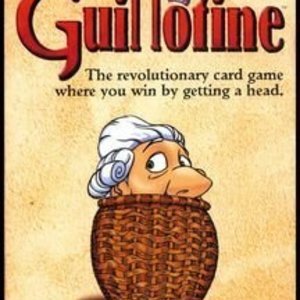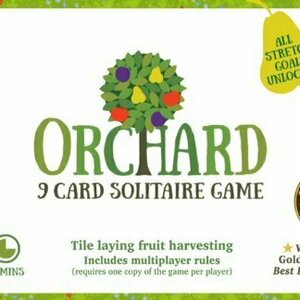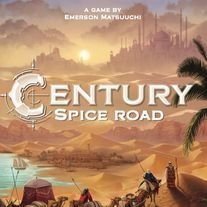Search
Search results
The Marinated Meeple (1853 KP) rated Guillotine in Tabletop Games
Oct 5, 2018
Simple, Easy, Elegant, Dark Humor (1 more)
Theme works perfectly even if it's a bit distasteful
A great travel card game.
This game is a must when we travel. It plays elegantly two players, and even better with more players making it slightly more chaotic. The whole game is using the cards in your hand to manipulate the line in order to collect the most powerful heads from the guillotine during the french revolution. This game is super easy to teach: Here's your cards, read what they do.... each turn you can play one of them to change the line. After playing your card (or not) you get to collect the next "head" in line.
For something this simple there really shouldn't be as much depth to this game, but it does have some good strategy, and really is a good time. Plus it's quick, we play a game in about 15 minutes.... perfect for having a drink on a balcony overlooking the ocean, and working on the line.
For something this simple there really shouldn't be as much depth to this game, but it does have some good strategy, and really is a good time. Plus it's quick, we play a game in about 15 minutes.... perfect for having a drink on a balcony overlooking the ocean, and working on the line.
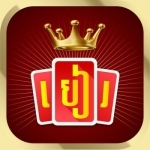
King of Cards Khmer
Games and Entertainment
App
Now everyone can play their favorite game cards on mobile with friends and families. King of Cards...
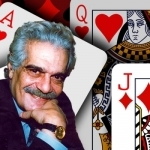
Omar Sharif Bridge
Games and Entertainment
App
Simply the best Bridge game in town, anytime, anywhere. If you are looking for a fun yet...
Purple Phoenix Games (2266 KP) rated Orchard: A 9 Card Solitaire Game in Tabletop Games
Mar 1, 2022
I love playing games with other people. Absolutely LOVE it. However, I also love playing games solo as well. When a game comes along that is specifically designed for solo play only, I tend to like them more than multiplayer games that include a solo mode. Also included here are cooperative games where the solo player just quarterbacks multiple players. But a game that is designed for solo play and even includes it in its title? I cannot recall many games I have played like this. But how is this one?
Orchard: A 9 Card Solitaire Game (simply Orchard from here on out) is a solo game where the player is attempting to harvest the most fruit from trees that are bred for high yield. As there are no players to play against, the player will instead compare their ending score with a table in the rulebook. Will the player’s game result in a “Pal-tree” score or will they score enough to be considered “Almost imposs-apple!”?
To setup, place the dice and Rotten Fruiteeple on the table. Shuffle the 18 cards, deal two decks of nine cards (two games worth), and choose a deck to play. Flip the first card over to start the orchard, shuffle the remaining cards and draw two into hand. The game is now setup and ready to begin!
Turns in Orchard could not be simpler: Play a Card, Place Dice, Draw a Card. From the two-card hand, choose one to be placed in the orchard with one very important rule: the newly-placed card must overlap another card in the orchard by overlapping matching tree types. So, a card can only be placed if the apple tree overlaps an apple tree, etc. More than one icon may overlap the existing card, but each icon must match types below it.
Once the new card has been placed, for each icon overlapped, a die matching the fruit type is placed on the icon. If this is the first time the tree has been overlapped, the die face is placed with value 1 showing. However, the die will increase in value each subsequent time it is overlapped (total die values of 1, 3, 6, 10). Therefore, when a card has been overlapped four times on the same icon, the maximum number of points has been reached for that icon. Should a player wish instead to forego any die placement and be unable (or unwilling) to place a card correctly, they may place any card, overlap an icon, and then add a Rotten Fruiteeple atop the mismatched icon. This spoils the fruit for the remainder of the game, so no further dice may be placed upon it, and also reduces the final score by three VP at game end for each token placed.
Finally, when the card and die have been placed, the player draws another card into their hand. When the final card has been played, or no further legal placements can be made, the game ends and the player totals up the dice values to arrive at their final score.
Components. This game is 18 cards of good quality, a bunch of custom dice, and two Rotten Fruit meeples. Everything is good quality and size, and it fits into a really cool sliding deck-box. The art, for me, is fine. The colors match fruits from the real world, and the dice match those color well enough too. I feel like different fruit choices could have been made to increase accessibility for our color-blind gamer friends. The plums and apples are both small and round (with an ever-so-slight different shape on the apple). I don’t know what other fruits would have been more appropriate – I’m not a botanist. Similarly, the dice are custom made with the pips looking like a plum or apple, and two sides of the dice showing a leaf icon. Perhaps in the interest of differentiation, instead of the leaves, the different dice colors could instead show the matching fruit style (if only the plum and apple looked differently enough). So instead of leaves, the red dice could show apples, the yellow dice could show pears, and the purple dice could show, I don’t know, eggplants? I am not color-blind, so these do not affect me, but it is something I have taken to commenting on as I review more and more games.
All in all, Orchard is a really good little game of overlapping and puzzling out next moves. The games are super-quick and engaging, and I always want to improve my score each time I play. When a game forces me to play again and again I feel it is a sign of a good game. I have plans to keep this one in its own special place where I can just grab it and go, instead of being dwarfed by my collection of much larger game boxes. If you are like me and pine for good solo play, then perhaps you should check out Orchard: A 9 Card Solitaire Game. The rules are light, game play is simple and fast, and it keeps drawing me in every time I look at the box.
Also let me know your highest score because I apparently am trash at this game, even though I really enjoy playing it. Have you scored in the top tier? Those must be some delicious fruits.
Orchard: A 9 Card Solitaire Game (simply Orchard from here on out) is a solo game where the player is attempting to harvest the most fruit from trees that are bred for high yield. As there are no players to play against, the player will instead compare their ending score with a table in the rulebook. Will the player’s game result in a “Pal-tree” score or will they score enough to be considered “Almost imposs-apple!”?
To setup, place the dice and Rotten Fruiteeple on the table. Shuffle the 18 cards, deal two decks of nine cards (two games worth), and choose a deck to play. Flip the first card over to start the orchard, shuffle the remaining cards and draw two into hand. The game is now setup and ready to begin!
Turns in Orchard could not be simpler: Play a Card, Place Dice, Draw a Card. From the two-card hand, choose one to be placed in the orchard with one very important rule: the newly-placed card must overlap another card in the orchard by overlapping matching tree types. So, a card can only be placed if the apple tree overlaps an apple tree, etc. More than one icon may overlap the existing card, but each icon must match types below it.
Once the new card has been placed, for each icon overlapped, a die matching the fruit type is placed on the icon. If this is the first time the tree has been overlapped, the die face is placed with value 1 showing. However, the die will increase in value each subsequent time it is overlapped (total die values of 1, 3, 6, 10). Therefore, when a card has been overlapped four times on the same icon, the maximum number of points has been reached for that icon. Should a player wish instead to forego any die placement and be unable (or unwilling) to place a card correctly, they may place any card, overlap an icon, and then add a Rotten Fruiteeple atop the mismatched icon. This spoils the fruit for the remainder of the game, so no further dice may be placed upon it, and also reduces the final score by three VP at game end for each token placed.
Finally, when the card and die have been placed, the player draws another card into their hand. When the final card has been played, or no further legal placements can be made, the game ends and the player totals up the dice values to arrive at their final score.
Components. This game is 18 cards of good quality, a bunch of custom dice, and two Rotten Fruit meeples. Everything is good quality and size, and it fits into a really cool sliding deck-box. The art, for me, is fine. The colors match fruits from the real world, and the dice match those color well enough too. I feel like different fruit choices could have been made to increase accessibility for our color-blind gamer friends. The plums and apples are both small and round (with an ever-so-slight different shape on the apple). I don’t know what other fruits would have been more appropriate – I’m not a botanist. Similarly, the dice are custom made with the pips looking like a plum or apple, and two sides of the dice showing a leaf icon. Perhaps in the interest of differentiation, instead of the leaves, the different dice colors could instead show the matching fruit style (if only the plum and apple looked differently enough). So instead of leaves, the red dice could show apples, the yellow dice could show pears, and the purple dice could show, I don’t know, eggplants? I am not color-blind, so these do not affect me, but it is something I have taken to commenting on as I review more and more games.
All in all, Orchard is a really good little game of overlapping and puzzling out next moves. The games are super-quick and engaging, and I always want to improve my score each time I play. When a game forces me to play again and again I feel it is a sign of a good game. I have plans to keep this one in its own special place where I can just grab it and go, instead of being dwarfed by my collection of much larger game boxes. If you are like me and pine for good solo play, then perhaps you should check out Orchard: A 9 Card Solitaire Game. The rules are light, game play is simple and fast, and it keeps drawing me in every time I look at the box.
Also let me know your highest score because I apparently am trash at this game, even though I really enjoy playing it. Have you scored in the top tier? Those must be some delicious fruits.

Anyplace Mafia party app. Mafia / Werewolf games P
Games
App
Anyplace Mafia PRO will completely substitute a set of cards for playing Mafia card game (party...
Purple Phoenix Games (2266 KP) rated Pocket Paragons in Tabletop Games
Sep 25, 2020
It’s a duel then? Fine. Choose your paragon and let’s see who can outwit whom. The ol’ “Battle of Wits” from “Princess Bride” now comes in card format with many planned IPs to skin over it. No, this isn’t a “Princess Bride” game, nor does it have any affiliation to the story, but once you play Pocket Paragons, you will immediately see why I made the connection.
Pocket Paragons is a two player dueling card game where the winner is the player to knock out their opponent’s character(s). This game employs a lot of card play with minimal amounts of cards and tremendous amounts of double-think and flat out guessing as to what your opponent might be thinking.
DISCLAIMER: We were provided a copy of this game for the purposes of this review. These are prototype media set components, and all complete copies will have extra components including these shown. Also, it is not my intention to detail every rule in the game, but to give our readers an idea of how the game plays. You are invited to back it on Kickstarter, order from your FLGS, or purchase through any retailers stocking it after it is released. -T
To setup a game of Pocket Paragons, players will choose one character (or three in a Tournament Mode), all associated cards, and an HP/Energy dial (I am using dice for my game). Players will display in front of them their character’s main Character card as well as the Ultimate card. All other cards related to their character will begin the game in hand and will be ready to be played immediately.
A game of Pocket Paragons could range from one card played to several rounds and upwards of 10 minutes. Tournament play can be longer still. For this preview I will be describing game play for single games.
On a turn each player will choose one of the cards in hand to be played, lay it face-down on the table, and flip it once both players are ready. When the cards are flipped, the players will compare and check for Counters. Each card may counter other card types and will have text stating so (Example: the Malice card from above shows that it counters Agility cards). If a player can play a card to counter their opponent’s card then the countering player sends the opponent’s card back to their hand and will gain one Energy. If the card played had damage printed on it, the countered player will reduce their HP by the printed damage amount. However, if no cards were countered, then both cards will activate and assign any damage. The next round may now begin with players choosing cards to be played one by one until a player is knocked out of the game.
After a card is played and used the player will be discarding into a discard pile. The only way to regain these cards into hand is by playing a rest card (yellow sun). Using the rest cards at just the right time will certainly reflect the strategy of the player. Players may use a rest card at any time, but some red Weapon cards can immediately Execute an opponent if played while they are resting (think coup de grace in RPGs). Therefore, while waiting until all cards in hand are used before playing a rest card makes logical sense, smart players may be saving their Execute cards for that exact instance.
Components. Again, this is a prototype copy that cobbles six characters from multiple sets to create the Media Set we were sent. We have been informed that retail (or Kickstarter) boxes will contain six related characters and dials to track HP and Energy. The cards we were sent are of okay quality, and I do not believe this is the stock that will be used on the final game. The art and art style on the game is quite nice. Icons and placement are logical, and cards are easy to read and understand. The artwork is very colorful and one thing I VERY MUCH appreciate on this (because I almost was lost after taking the messy components shot below) is that each card belonging to specific characters show the same artwork in fade in the background. I had a hot flash (weird for a guy right?) when I was sorting the deck back together after playing it and not knowing exactly which cards belonged with which characters. So, thanks for that Solis Game Studio!
I truly enjoyed my plays of Pocket Paragons. The games are super quick, but certainly test your ability to out-think your opponent and try to guess when they might be using their rest card so you can bust out the Execute. And each character plays so differently from others that it’s truly a joy to try out each and every character you can to see which one resonates with your style of play. The art is fabulous with bright colors (a definite plus for me), and the learning curve is nice and smooth – anyone can play this in about three to five minutes of learning. If your collection is screaming for a super quick card game that can be played in under 10 minutes and you can get some brain cells moving around, then Pocket Paragons is for you. It’s certainly for me and my collection. I love everything about it and can see myself diving down the rabbit hole once more and more IPs are released. Oh boy, this is gonna hurt the wallet…
Back it on Kickstarter launching October 6, 2020!
Pocket Paragons is a two player dueling card game where the winner is the player to knock out their opponent’s character(s). This game employs a lot of card play with minimal amounts of cards and tremendous amounts of double-think and flat out guessing as to what your opponent might be thinking.
DISCLAIMER: We were provided a copy of this game for the purposes of this review. These are prototype media set components, and all complete copies will have extra components including these shown. Also, it is not my intention to detail every rule in the game, but to give our readers an idea of how the game plays. You are invited to back it on Kickstarter, order from your FLGS, or purchase through any retailers stocking it after it is released. -T
To setup a game of Pocket Paragons, players will choose one character (or three in a Tournament Mode), all associated cards, and an HP/Energy dial (I am using dice for my game). Players will display in front of them their character’s main Character card as well as the Ultimate card. All other cards related to their character will begin the game in hand and will be ready to be played immediately.
A game of Pocket Paragons could range from one card played to several rounds and upwards of 10 minutes. Tournament play can be longer still. For this preview I will be describing game play for single games.
On a turn each player will choose one of the cards in hand to be played, lay it face-down on the table, and flip it once both players are ready. When the cards are flipped, the players will compare and check for Counters. Each card may counter other card types and will have text stating so (Example: the Malice card from above shows that it counters Agility cards). If a player can play a card to counter their opponent’s card then the countering player sends the opponent’s card back to their hand and will gain one Energy. If the card played had damage printed on it, the countered player will reduce their HP by the printed damage amount. However, if no cards were countered, then both cards will activate and assign any damage. The next round may now begin with players choosing cards to be played one by one until a player is knocked out of the game.
After a card is played and used the player will be discarding into a discard pile. The only way to regain these cards into hand is by playing a rest card (yellow sun). Using the rest cards at just the right time will certainly reflect the strategy of the player. Players may use a rest card at any time, but some red Weapon cards can immediately Execute an opponent if played while they are resting (think coup de grace in RPGs). Therefore, while waiting until all cards in hand are used before playing a rest card makes logical sense, smart players may be saving their Execute cards for that exact instance.
Components. Again, this is a prototype copy that cobbles six characters from multiple sets to create the Media Set we were sent. We have been informed that retail (or Kickstarter) boxes will contain six related characters and dials to track HP and Energy. The cards we were sent are of okay quality, and I do not believe this is the stock that will be used on the final game. The art and art style on the game is quite nice. Icons and placement are logical, and cards are easy to read and understand. The artwork is very colorful and one thing I VERY MUCH appreciate on this (because I almost was lost after taking the messy components shot below) is that each card belonging to specific characters show the same artwork in fade in the background. I had a hot flash (weird for a guy right?) when I was sorting the deck back together after playing it and not knowing exactly which cards belonged with which characters. So, thanks for that Solis Game Studio!
I truly enjoyed my plays of Pocket Paragons. The games are super quick, but certainly test your ability to out-think your opponent and try to guess when they might be using their rest card so you can bust out the Execute. And each character plays so differently from others that it’s truly a joy to try out each and every character you can to see which one resonates with your style of play. The art is fabulous with bright colors (a definite plus for me), and the learning curve is nice and smooth – anyone can play this in about three to five minutes of learning. If your collection is screaming for a super quick card game that can be played in under 10 minutes and you can get some brain cells moving around, then Pocket Paragons is for you. It’s certainly for me and my collection. I love everything about it and can see myself diving down the rabbit hole once more and more IPs are released. Oh boy, this is gonna hurt the wallet…
Back it on Kickstarter launching October 6, 2020!
Russell Evans (179 KP) rated Tyrants of the Underdark in Tabletop Games
Feb 24, 2020 (Updated Feb 24, 2020)
Interesting deck building mechanics (3 more)
Several different viable strategic options
Quick paced, easy to learn to play
Great artwork on cards
A quick paced game of fantasy deck building strategy, skilfully mixed with area control
This game mixes up a couple of game genres, but it balances them really well. I brought this game as my teenage son is a D&D fan and we have played it many times now. We’ve enjoyed it, so we also brought the expansion decks – which, for me, is always the sign of a good game. The game is pretty easy to learn, and once you have the grasp of the game mechanics, the turns flow smoothly and quickly. A 3 player game takes us just over an hour to play.
A brief overview of the Game
Each player controls a Drow house in the Underdark, competing to take control by getting the most Victory Points at the end of the game. Victory points are gained from various sources, for example, controlling locations on the board, assassinating your rivals troops, card abilities, cards owned in your deck or promoted.
Each turn the player draws cards from their own deck that determine what they can do in their turn. There are several different strategies you can pursue to try and win – subterfuge, violence, using spies, gathering a powerful deck etc. You can use influence that you gain in the game to buy new cards from the communal market to expand your deck and buy new minions with a range of different abilities. Random card drawers in the market can be frustrating when your opponents get the card you want straight after your turn, but that’s the nature of the game. Some of the cards can seem super–powered but there are several of these, so we find it balances out overall.
The promotion mechanic is rather interesting - it gives you the dilemma of promoting a card to gain increased victory points but means that the card (and its abilities) aren’t available for you to use for rest of the game. Do you hang on to it a bit longer to use that awesome ability and risk the game ending before you can promote that card for loads more victory points?
There are 4 decks included in the base game; Drow, Dragons, Elementals and Demons and they all play very differently. You use a mix of 2 decks each game, so that adds a bit of variety and re-playability. (Add in the 2 from the expansion for a bit more – Aberrations and Undead.)
Also worth mentioning; the artwork on the cards is nice and the board is good too.
I think Tyrants of the Underdark is a very enjoyable game and it gets a solid 9/10. I just wish there were some more expansions for it.
A brief overview of the Game
Each player controls a Drow house in the Underdark, competing to take control by getting the most Victory Points at the end of the game. Victory points are gained from various sources, for example, controlling locations on the board, assassinating your rivals troops, card abilities, cards owned in your deck or promoted.
Each turn the player draws cards from their own deck that determine what they can do in their turn. There are several different strategies you can pursue to try and win – subterfuge, violence, using spies, gathering a powerful deck etc. You can use influence that you gain in the game to buy new cards from the communal market to expand your deck and buy new minions with a range of different abilities. Random card drawers in the market can be frustrating when your opponents get the card you want straight after your turn, but that’s the nature of the game. Some of the cards can seem super–powered but there are several of these, so we find it balances out overall.
The promotion mechanic is rather interesting - it gives you the dilemma of promoting a card to gain increased victory points but means that the card (and its abilities) aren’t available for you to use for rest of the game. Do you hang on to it a bit longer to use that awesome ability and risk the game ending before you can promote that card for loads more victory points?
There are 4 decks included in the base game; Drow, Dragons, Elementals and Demons and they all play very differently. You use a mix of 2 decks each game, so that adds a bit of variety and re-playability. (Add in the 2 from the expansion for a bit more – Aberrations and Undead.)
Also worth mentioning; the artwork on the cards is nice and the board is good too.
I think Tyrants of the Underdark is a very enjoyable game and it gets a solid 9/10. I just wish there were some more expansions for it.
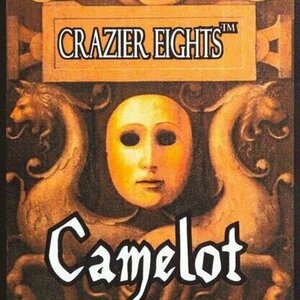
Crazier Eights: Camelot
Tabletop Game
To play Crazier Eights players start with seven cards in hand. During your turn, you draw a card,...
Michael Toms (1 KP) rated Century: Spice Road in Tabletop Games
Apr 14, 2018
Easy to learn (3 more)
Quick gameplay
Interesting, strategic gameplay
Nice components
Doesn't play as well with 2 as it does with 3 or 4 (1 more)
Can be luck based, but there are many other options if you miss your card.
Great game
